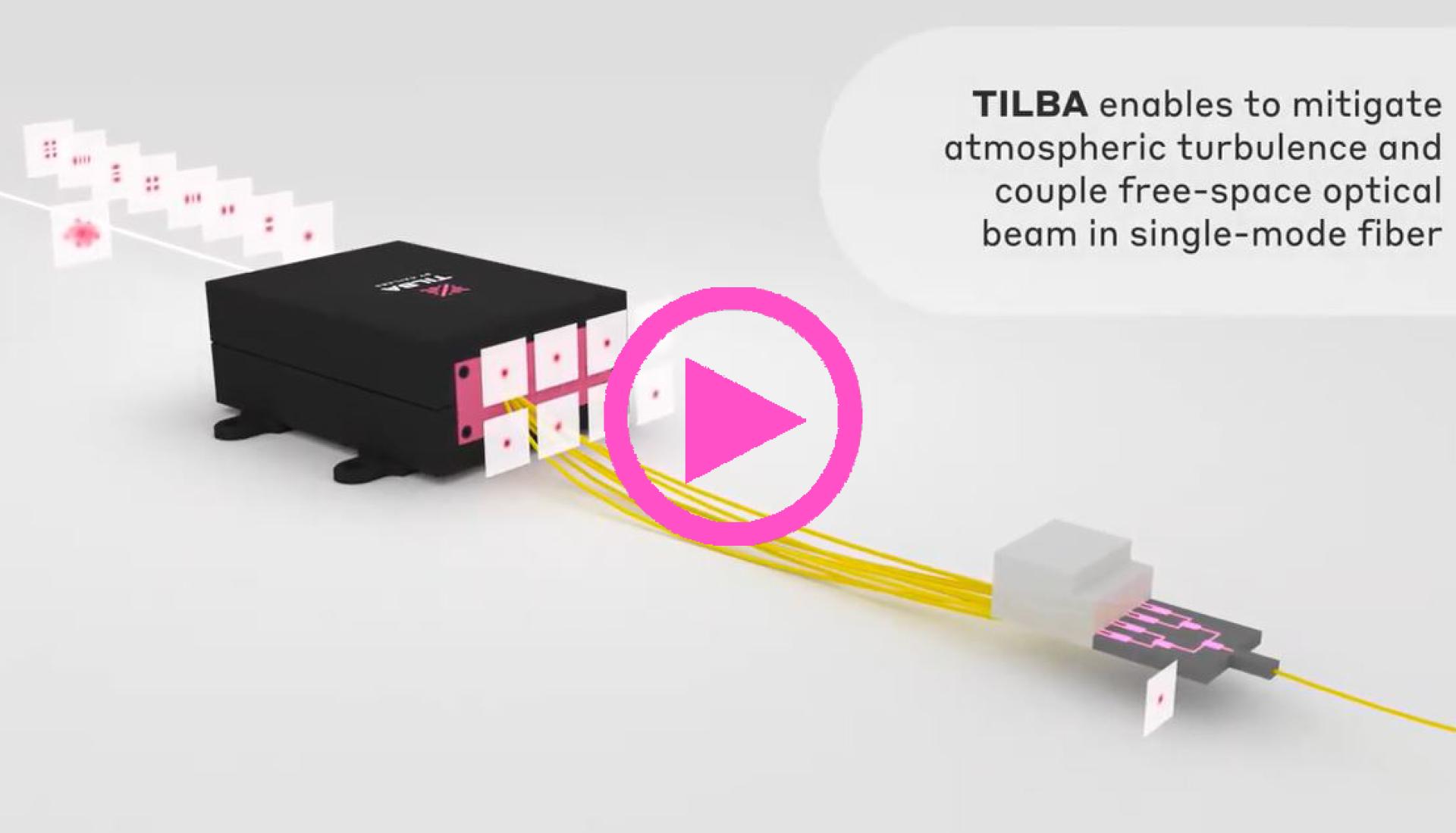Looking for a plug-and-play solution for atmospheric turbulence mitigation?

High-definition imaging, very high-throughput satellite communication networks, white spot connectivity or discrete military links – these are all applications that cannot be achieved with today’s radio frequency networks that are limited in throughput and easily detectable. Yet, optical links in free space are limited by atmospheric turbulence and are struggling to develop.
In this video, you will discover how you can easily compensate for these atmospheric turbulences with TILBA-ATMO.
TILBA-ATMO was developed by Cailabs to limit the influence of turbulence by collecting the various spatial modes of a wavefront. This new turnkey version allows coupling a turbulent signal to a single-mode fiber. The output is thus easily integrated into any system and compatible with all types of formats and modulations.
Unique in the world, the MPLC (Multi-Plane Light Conversion) technology has already proven itself in the first version of TILBA with leading players such as NEC and DLR . We are now offering a new version of TILBA-ATMO including a coherent recombination system of intermediate signals to enable a unique single-mode output.
In just 2 minutes, discover how TILBA-ATMO works and how the spatial demultiplexing approach can improve laser communications.


By David Allioux
David Allioux, who holds a Ph.D. in optics from the University of Lyon, joined Cailabs in 2018. As a project and product manager, he is in charge of the development and integration of telecommunication R&D solutions. He also brings his expertise to develop and commercialize the laser communication product line.





